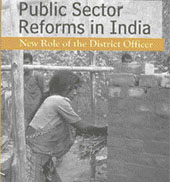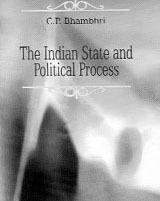|
SHORT TAKES
Economy and sex ratio
Randeep Wadehra
Public Sector Reforms in India
by Chandan Sinha. Sage, N. Delhi.
Pages 331. Rs 395
 In
our quasi-capitalist
economy, the state’s role as administrator, facilitator and provider
remains paramount. This is necessary because the post-liberalisation
private sector behemoths are not exactly enthusiastic about shouldering
responsibilities towards promotion of social welfare. The
poverty-stricken teeming millions of India are vulnerable to inhumane
exploitation. Only government agencies – a vital part of the public
sector (a term used here not only for PSUs but also other governmental
institutions) – have the necessary wherewithal to empower them and
assure a reasonably decent quality of life. But how effective such
agencies really are, especially at the district level aka grassroots?
This book takes a comprehensive look and suggests ways and means for
developing micro-level leadership that would be capable of delivering
the goods. In
our quasi-capitalist
economy, the state’s role as administrator, facilitator and provider
remains paramount. This is necessary because the post-liberalisation
private sector behemoths are not exactly enthusiastic about shouldering
responsibilities towards promotion of social welfare. The
poverty-stricken teeming millions of India are vulnerable to inhumane
exploitation. Only government agencies – a vital part of the public
sector (a term used here not only for PSUs but also other governmental
institutions) – have the necessary wherewithal to empower them and
assure a reasonably decent quality of life. But how effective such
agencies really are, especially at the district level aka grassroots?
This book takes a comprehensive look and suggests ways and means for
developing micro-level leadership that would be capable of delivering
the goods.
The Indian State and
Political Process
by C.P. Bhambri. Shipra, N. Delhi.
Pages vi+360. Rs 950
 From
being a ‘basket case’ to ‘functional anarchy’ to a vibrant
democracy with credible claims to the status of a global power India has
certainly travelled a long way. Starting off on a socialist path, the
Indian State consolidated its domestic political, economic and
administrative functions, instruments and achievements. Its switchover
to the market economy in the 1990s has opened up new vistas for growth
with attendant problems. The challenges on the way have been met with
requisite dynamism. There have been failures for sure but overall the
track record can be described as commendable. Apart from investigating
the political processes that moulded the Indian State, Bhambri takes
into account various international factors that influence our economic
and political policies. Of particular interest are his analyses of the
role of the Left and the rise of the Hindutva while factoring in the
looming threat from Naxalites and other disaffected segments of society. From
being a ‘basket case’ to ‘functional anarchy’ to a vibrant
democracy with credible claims to the status of a global power India has
certainly travelled a long way. Starting off on a socialist path, the
Indian State consolidated its domestic political, economic and
administrative functions, instruments and achievements. Its switchover
to the market economy in the 1990s has opened up new vistas for growth
with attendant problems. The challenges on the way have been met with
requisite dynamism. There have been failures for sure but overall the
track record can be described as commendable. Apart from investigating
the political processes that moulded the Indian State, Bhambri takes
into account various international factors that influence our economic
and political policies. Of particular interest are his analyses of the
role of the Left and the rise of the Hindutva while factoring in the
looming threat from Naxalites and other disaffected segments of society.
Female foeticide in
Punjab
by D.P. Singh. Paragon, N. Delhi.
Pages xiii+166. Rs 750
 Although
the Indian girl-child’s position is precarious throughout the country
she remains the most vulnerable in Punjab. As per the 2001 census, the
child sex ratio is the worst in Punjab – 789 in urban areas and 795 in
rural. This indicates a trend of increased female foeticide with
potentially disastrous demographic consequences. Long-term social and
economic effects have yet to be ascertained. This book studies various
causes and consequences of female foeticide and suggests remedial
measures too. The empirical data as well as the annexure provided by the
author will be of particular value to students. Although
the Indian girl-child’s position is precarious throughout the country
she remains the most vulnerable in Punjab. As per the 2001 census, the
child sex ratio is the worst in Punjab – 789 in urban areas and 795 in
rural. This indicates a trend of increased female foeticide with
potentially disastrous demographic consequences. Long-term social and
economic effects have yet to be ascertained. This book studies various
causes and consequences of female foeticide and suggests remedial
measures too. The empirical data as well as the annexure provided by the
author will be of particular value to students.
|